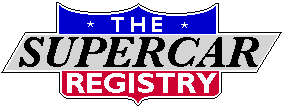

Dedicated to the Promotion and Preservation of American Muscle Cars, Dealer built Supercars and COPO cars. |
|
|||||||
| Register | Album Gallery | Thread Gallery | FAQ | Community | Calendar | Become a Paid Member | Today's Posts | Search |

|
|
|
Thread Tools | Display Modes |
|
|
|
#1
|
|||
|
|||
|
superb information and concisely written, well worth the visit to crg
 |
|
#2
|
|||
|
|||
|
I have read the excellent tech description of the Camaro build process by John Hinckley before and was very impressed. John is one the very few people around today who were around back then and paid attention to how things were done. He is an extremely invaluable resource to our historical restoration endeavours today.
My contribution is only from research by logging many original cars, and it's only most accurate when considering full size cars built at 15 different assembly plants between '58 & '64. Those full size cars amount to over 20 different body styles, not counting 6cyl vs V8, each with their own Fisher sequential number. Lots of arithmetic........  Verne  |
|
#3
|
|||
|
|||
|
Kurt,
I haven't read the link you provided, but I just can't understand how the body number could be the order number. Orders came in one after the other for different styles of bodies, so if the number on the cowl tag was the order number, there would no sequential numbering of each body style at all. They would be all mixed together. I don't have any facts or knowledge to dispute that, but it just doesn't make sense that Fisher would not want to sequentially number each style of body, when they always did prior to that time. Is it possible that the record of numbers of each style existed only on paperwork??? |
|
#4
|
|||
|
|||
|
Verne,
That's correct, there's no sequential # of the body #'s from 69+. 69 Camaro and 69 full-size data proves this out and this is documented by Chevrolet in one of the dealer sheets. I highly doubt that Fisher had much input into such a change.
__________________
Kurt S - CRG |